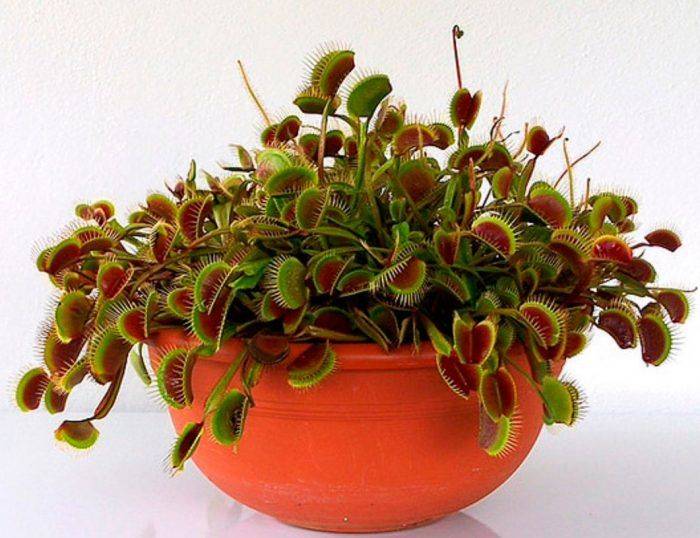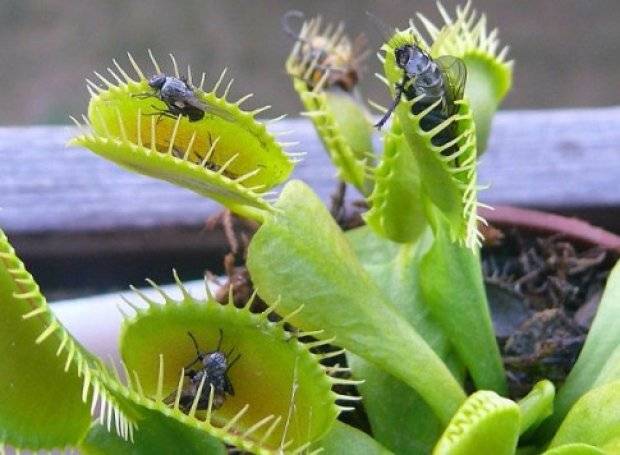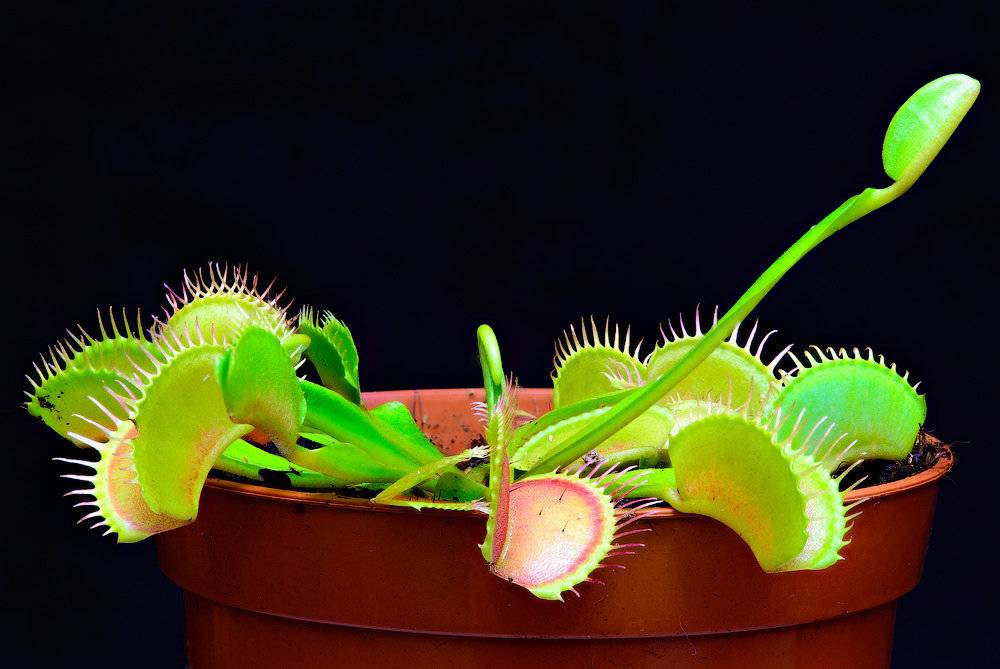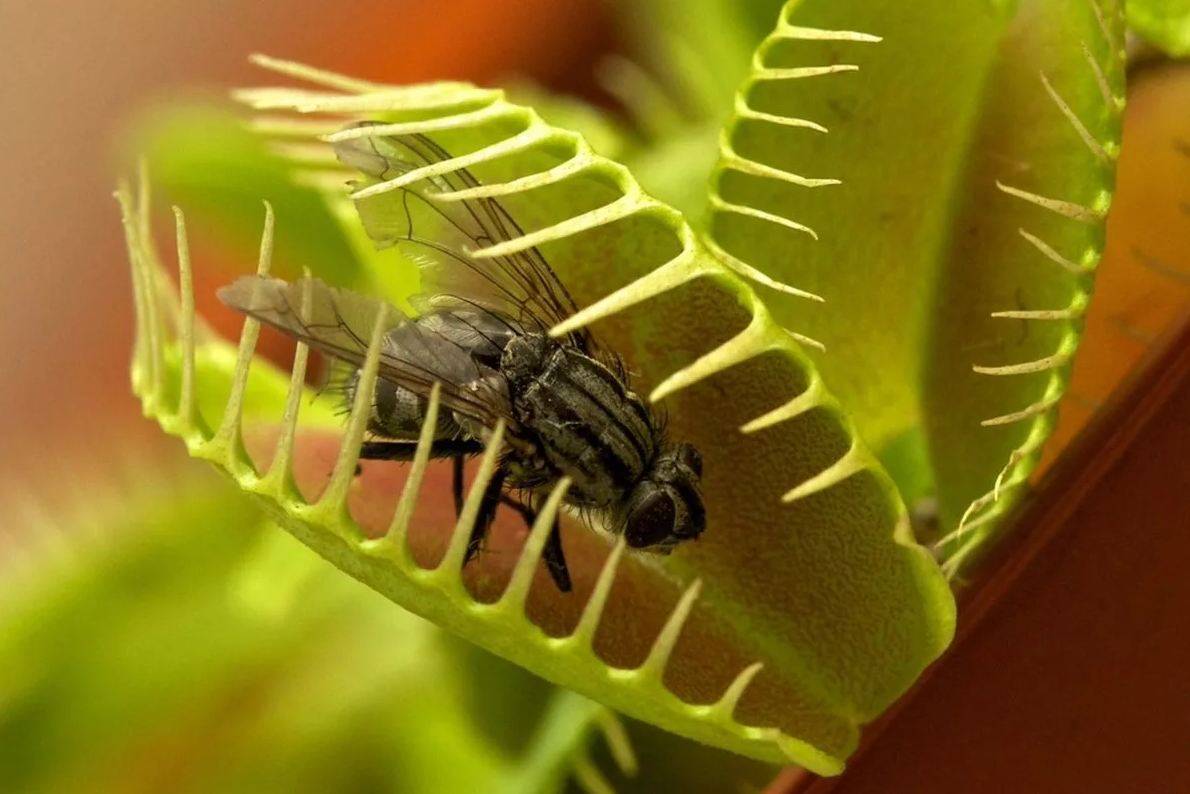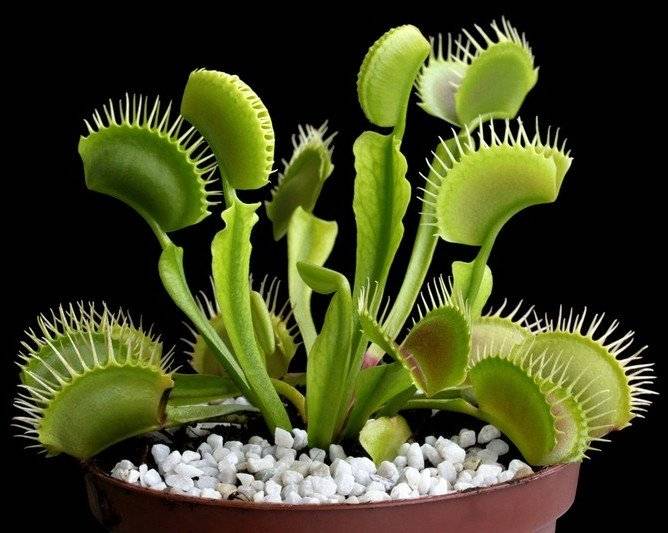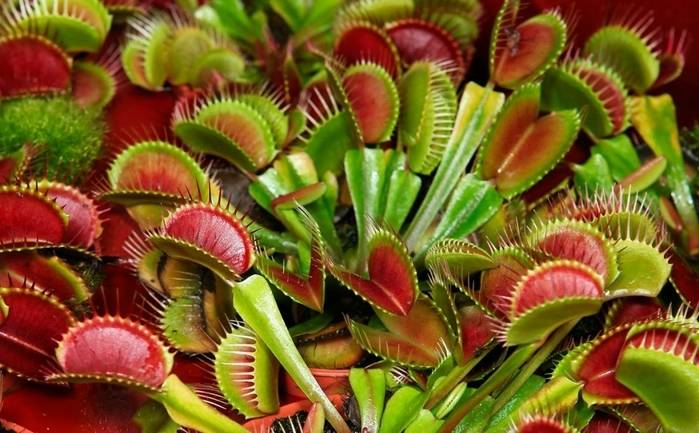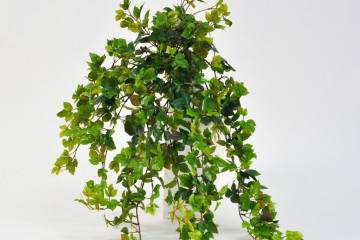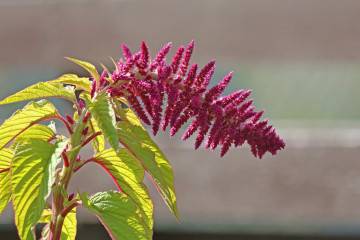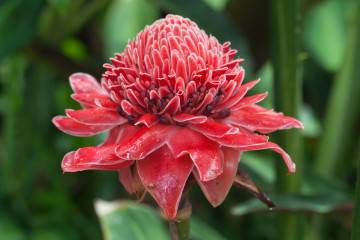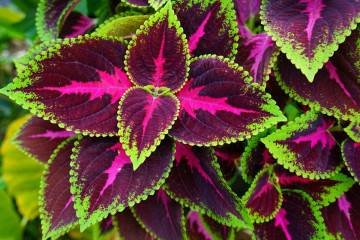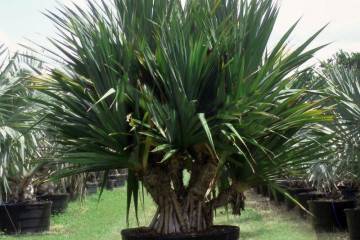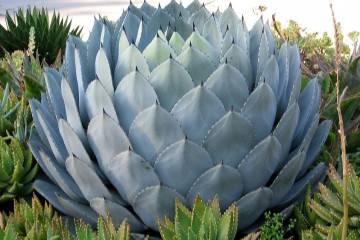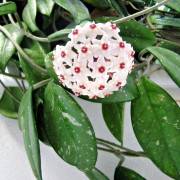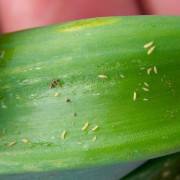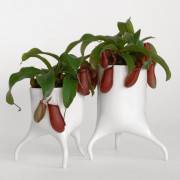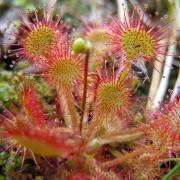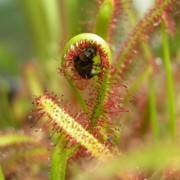Venus flytrap plant - how and what to feed
Content:
The Venus flycatcher (Dionaea muscipula) is a carnivorous plant that grows in peat bogs in the middle of pine forests in the eastern regions of the United States. Ornamental culture prefers areas with a humid temperate climate. Against the background of a deficiency of nutrients in the soil, which are necessary for full growth and development, the plant became carnivorous. Below you can find information on how to grow an exotic culture at home.
Description
The flycatcher is a plant that will win the hearts of even the most sophisticated flower growers.
Dionea is not poisonous. The width of the Venus flytrap reaches 14-15 cm. The leaf plates are arranged in the form of rosettes around the underground stems. Each bush has approximately 5-7 leaf plates, each of which is considered an insect trap. On the leaf blades, it is possible to note the presence of thorns located along the outer edge of each petal. Each trap contains small hairs that act as sensors.
When dionea begins to bloom, small flowers are revealed, resembling the outlines of a star. After flowering, seeds are formed, which can be used for the propagation of the flycatcher.
Having accidentally touched the antennae once, it is impossible to achieve the closure of the sheet plates. But as soon as the insect touches two different hairs twice, the trap will slam shut in a split second.
When an insect enters the trap, the plant begins to secrete digestive enzymes. Complete dissolution of prey occurs within 14 days. After the specified period of time, the trap begins to open again, waiting for the next victim.
Each of the traps is capable of destroying 5-7 insects in its life.
Flycatcher varieties
Among the most popular varieties of the Venus flytrap, it is worth highlighting the varieties listed below.
- Crocodile is a decorative culture with traps, the inner sides of which are painted pink. Gradually, the color scheme of the inner petals changes and turns red. Crocodile leaf plates are arranged horizontally.
- Newt is a type of flycatcher with unusual trap shapes. Her petals are stretched out. One of their sides is cut. Teeth that look sharp can stick together. It is not difficult to grow such a plant.
- Dracula is a variety, the inner side of the traps of which is painted in red tones. The teeth on the traps are naturally short in size. Red stripes are located near the bases of the leaf plates.
- Danteyn Trap is a plant whose diameter does not exceed 11-14 cm. 7-12 traps can form on each ornamental crop. The green plant is naturally endowed with traps, the inner side of which is painted in a bright red palette. The trapped sheet plates are arranged vertically.
- Giant is a type of Venus flytrap with green rosettes that form large traps. Placing containers with plants in a well-lit room will give the traps a bright crimson tone.
How to plant a Venus flytrap from seeds
To propagate the flycatcher at home, flower growers often use the seed method.
To accelerate the process of germination of seed material, a cold stratification procedure should be carried out before sowing. For this purpose, the seeds, colored black, are placed in a container with a small piece of gauze, which was previously soaked in a fungicidal solution. The container is transferred to the refrigerator for 40-60 days. During this period, the napkin is re-soaked in the fungicide solution as needed.
As soon as the stratification time comes to an end, the seeds can be sown in containers, which should be filled with soil, in the content of which there is a small amount:
- sphagnum moss;
- perlite;
- coconut substrate.
The seeds are planted in the soil mixture and sprinkled with a small layer of sand. The container is covered with a piece of glass and transferred to a room where the temperature is between 26-28 ° C.
The germination process of flycatcher seeds can take 14-30 days. As soon as the first pair of leaves is formed on the sprouts, the glass can be removed from the container. 30 days after that, young plants are transplanted in separate containers.
Flycatcher plant: home care
To grow a healthy Venus flytrap, it is recommended that you follow the advice of experts regarding caring for a predator. Below is detailed information on how to care for your flycatcher.
Lighting
Flower pots should be located in an area that is well lit by the sun's rays. On especially hot summer days, it is advisable to cover the plants with a gauze piece from direct sunlight.
In winter, it is recommended to carry out additional lighting. For these purposes, fluorescent lamps can be purchased. During the period of active growth, the duration of daylight hours should reach 16 hours.
Temperature and humidity
The temperature in the room in which the flycatcher flowers are located should be between 24-27 ° C. Systematic airing of the room is encouraged, but it is important to prevent drafts.
The humidity level in the room should be up to 70%. If the air in the room is drier, it is important to take care of spraying water near the place where the pots with a flytrap are.
Watering
The soil in the containers must be kept moist at all times. It is advisable to moisten the ground from below. If you ignore this recommendation, you can provoke soil compaction, which will cause a lack of oxygen in the area of the root system.
Containers with exotic culture are displayed on trays filled with water. It is very important that the tank drain holes are covered with liquid.
Fertilization and feeding
The flycatcher flower feeds on insects. The plant does not need to apply additional fertilizing to the soil mixture. Experienced flower growers advise refraining from the desire to feed the decorative culture:
- earthworms;
- beetles, characterized by the presence of a hard chitinous shell;
- rodents that can harm perennials.
To avoid rotting an exotic friend, you should not place pieces of meat or sausage in the traps. It is advisable to use small flies, mosquitoes and spiders to feed the flycatcher. Dione does not want to eat so often.
Feeding is unacceptable in some cases:
- in the first month after transplant;
- in case of illness;
- in the absence of proper lighting.
Transfer
Experienced flower growers recommend transplanting bushes every 2 years. It is best to carry out the process during the spring months.
The containers for planting Dionea must be deep enough (the length of the root system reaches 20-22 cm). The roots of the plant are quite fragile, so it is important to be careful while working, the step-by-step process is described below.
- The flowers are removed from the container.
- The root system of plants is freed from old soil.
- The sheet plates are washed gently.
- The containers are filled with soil mixture, which includes quartz sand, previously soaked in distilled water, perlite and peat.
- Holes are pulled out in the ground, and the root system of the ornamental culture deepens into the holes. The resulting voids in the holes are filled with soil.
- The container is transferred to a well-lit room. It is important to systematically moisten the soil for 5 weeks after transplanting.
Venus flytrap bloom
The flowering period of the flycatcher begins in late spring. Long peduncles form on the bushes, in the upper part of which there are inflorescences.
Flowers of a white shade are endowed by nature with a pleasant sweetish aroma. The flowering period lasts 10-15 days. In the case when there is no need to collect the seeds of the flycatcher, the buds can be cut off before they open, since flowering takes all the strength from the Dionea. And this becomes the reason for the slowdown in growth.
Reproduction
Dionea can multiply in several ways. Below is information on the step-by-step process for each breeding method.
Seed method
Step-by-step process of seed propagation:
- Seed material is gently deepened 1 mm into the soil mixture, which includes sphagnum moss, quartz sand and peat.
- The seed is sprinkled with a small layer of sand.
- The soil is moistened with a spray bottle.
- The container is covered with a piece of glass and taken out into a room well-lit by the sun's rays, where the temperature reaches 27-28 ° C.
- The soil is systematically moistened, and the glass is removed for 5-10 minutes a day in order to ventilate.
- As soon as the height of the appeared seedlings reaches 7.5-8 cm, they can be cut into separate pots.
Propagation by leaf cuttings
To propagate a plant in this way, you will need to cut off a leaf plate from an adult bush. The slice area is processed by Kornevin.
The resulting cuttings are planted in pots filled with a substrate consisting of quartz sand and peat. The container is covered with a glass layer. After 2-3 months, the root system will form in the cuttings. Further, the culture will grow much faster.
Dividing the bush
During the transplantation of an ornamental culture, you can use the method of dividing the bush.
Dionea the flycatcher is taken out of the old container. The root system is freed from the soil mixture. Daughter rosettes are separated from adult plants. Delenki are seated in different pots, which are transferred to a room with diffused lighting until they are completely engrafted in a new container.
Growing problems
By providing the flowers with proper care, most of the problems that arise when growing a flycatcher can be avoided. Below you can find the most common problems that a florist may face.
Insectivorous plants are not susceptible to the invasion of pests, however, in some cases, aphids, spider mites and mealybugs can harm the plantings. To cope with harmful insects, it is advisable to treat the flycatcher with an insecticidal agent.
You can cope with the situation by treating the ornamental culture with a fungicidal preparation.
Growing a Venus flytrap is very interesting not only for beginners, but also for experienced flower growers. The plant requires proper care, which is not a big hassle. In return, the charming predatory flower of the flycatcher will delight you with its beautiful flowering and the peculiarity of ridding the territory of annoying flies and spiders.
